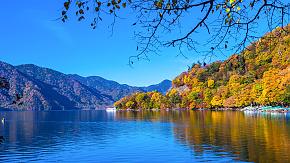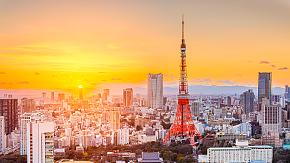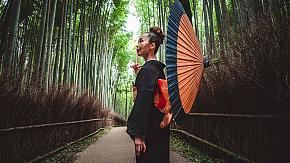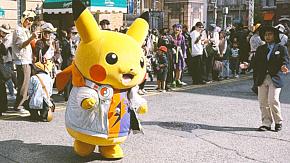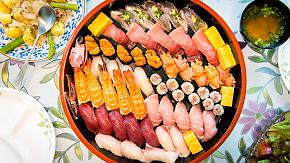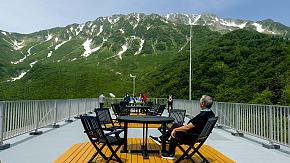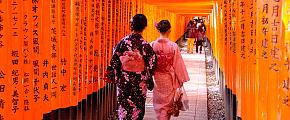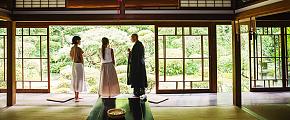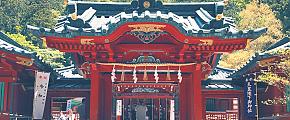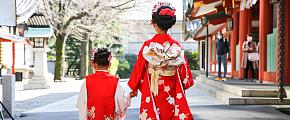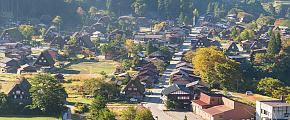Guide to Japan's Rainy Season
Planning your summer Japan tour from June to July, but have no idea how to deal with the showers during this special rainy season? From the average rainy dates to the best places to catch the sunshine, as well as recommended indoor activities and tips for your reference, enjoy the "plum rain" (tsuyu) of Japan with this ultimate rainy season guide!
Is the Rainy Season Ideal for a Japan Tour
Touring Japan during the rainy season (June to mid-July) can be a little challenging, but it's still charming and feasible with proper preparation and a flexible attitude. What's more, the rain is not a threat that will "ruin" your journey.
Although the air is high in humidity, the rainy season doesn't mean it's a period of constant rain every day. You may catch the showers, but a full day of rain is also rare to encounter during your Japan sightseeing. Even in June, the month of water, the sun still shines for about 15 days. All you need to do is check the weather forecast and prepare for the showers.
How to Deal With the Japan Rainy Season Journey
Usually, rain boots are the key to solving all the outdoor problems, and luckily, there are plenty of indoor activities in Japan. Paired with a clear plastic umbrella or raincoat (and more spare T-shirts and socks to skip the laundry), you can take advantage of this shoulder season, enjoy the affordable prices from tickets to rooms, and make the most of the empty and quiet attractions in their refreshing, lush hydrangeas and ripening plums.
(P.S. If you are looking for more outdoor fun for your Japan honeymoon or anniversary trip, this tsuyu period is not the common best time for your Japan visit.)
Weather of Japan's Tsuyu Season
Japan's rainy season features high humidity with sticky, heavy air. It is rare to catch continuous rainfall, but more intermittent showers within half an hour, which also bring a mild temperature around 22 to 28℃.
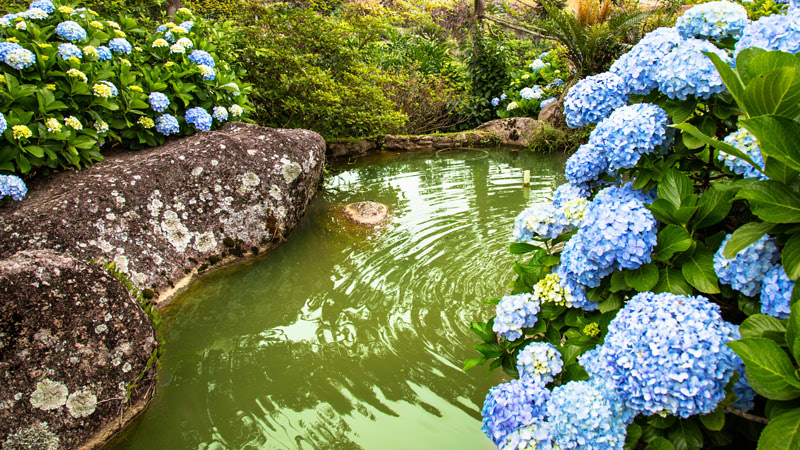 Hydrangeas After the Rain
Hydrangeas After the Rain
Japan's Rainy Season Details
Japan's rainy season lasts from June to mid-July and peaks in late June. Almost the whole island is affected by the prolonged rain in early summer, except for the southernmost Okinawa, which has ended its earliest rainfall, and Hokkaido in the far north, barely caught by the tsuyu season.
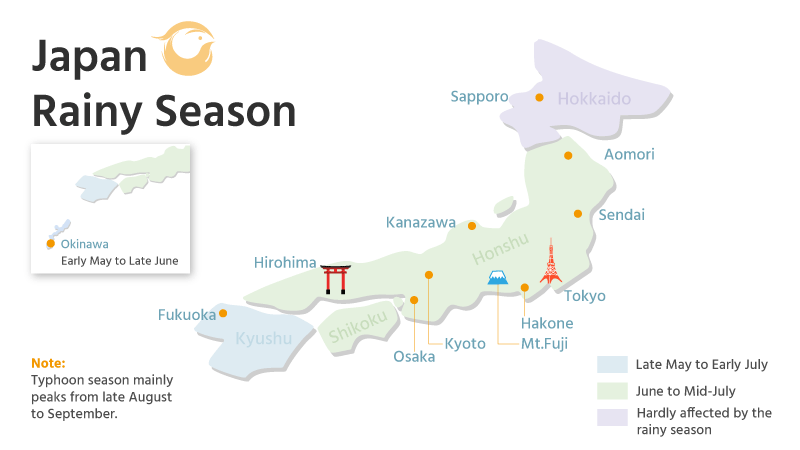 Japan Rainy Season Map
Japan Rainy Season Map
|
Region
|
Start
|
End
|
Rainfall Situation
|
|
Okinawa
|
May 8
|
June 23
|
Heavy
|
|
Kyushu
|
May 29
|
July 13
|
Persistent
|
|
Shikoku
|
June 4
|
July 17
|
Thunderstorm
|
|
Kansai (Osaka, Kyoto)
|
June 6
|
July 19
|
More Showers
|
|
Kanto (Tokyo)
|
June 8
|
July 20
|
More Showers
|
|
Tohoku
|
June 12
|
July 27
|
Moderate
|
|
Hokkaido
|
/
|
/
|
Barely Any
|
Typhoon Season in Japan
The typhoon season in Japan is quite a long period from May to October, usually peaks in August and September, and lands in the southern region, causing a few days of concentrated downpour in Okinawa, Kyushu, and Shikoku.
Though Tokyo, Kyoto, and Osaka are less affected, heavy rainfall and strong winds are common there during the typhoon's landfall. Hokkaido, in the meantime, is still the least affected area.
Best Time to Visit Japan's Wet Season
- May: homeland sightseeing before the rain arrives on the main island
- Late July to August: Kanto, Tohoku, and Hokkaido journey to escape from the typhoon
Where to Go During Japan's Rainy Season
For some carefree outdoor experiences, here is a rule to follow during your summer Japan sightseeing: head to the north and up to the highlands. You will find your ideal dry destinations and embrace the sunshine again.
Hokkaido
A true all-year destination barely affected by the seasonal rainfall, even during the typhoon season, Hokkaido still maintains its cool and crisp weather. It can be your idyllic wanderland, with stunning flower fields, tranquil countryside, and lush forests in their bright colors, always a top place to go during your summer Japan tour.
Karuizawa
Beloved by locals and nature seekers, the picturesque mountain town of Karuizawa is an ideal summer resort with highland flowers, emerald lakes, pouring waterfalls, and fresh lettuce. Though it is not as dry as Hokkaido, you can take advantage of its close distance from Tokyo for your easy beginning with hiking or cycling.
Seto Inland Sea
The special area between Honshu and Shikoku is blessed by the mountainous landscape of Shikoku, which blocks parts of the rainfall over this inland sea. Island hopping is still available here for your coastal sightseeing, or jump into those various museums as shelter from the occasional showers.
Top Things to Do in Japan When it Rains
Indoor activities are always the best choices for your rainy day visit, and the good news is, Japan never has a shortage of them. Also, take advantage of the rain to catch the unique seasonal scenery and rainy philosophy of Japan!
Museum Hopping
That's a lot to try for your museum collections in Japan. Start from Tokyo, you can step into the fairytale world at the Ghibli Museum with Totoro, or dive into the Tokyo National Museum for your ultimate visual feast. While in Kyoto, learn and try some ancient techniques from the Samurai and Ninja Museum, or enter the nijigen world with the smell of ink at the Kyoto International Manga Museum - never too long to stay there!
Enjoy a Kabuki or Sumo Show
For some more relaxing indoor activities, why not grab your ticket to the theatre for a traditional Kabuki show? Whether a 1-hour single act to sample the high max, or the 5-hour whole round to sample Japan's authentic culture, inside the theatre, there is no need to worry about the rain. The traditional dojo (Japanese gym) of Sumo wrestling is also a good option - just enjoy the muscle-to-muscle competitions and take the rain as the final BGM to accompany the games.
Culture Sample for Tea to Flowers
Also, a popular way for ancient Japanese to spend their rainy days - visit the tea house as a shelter, and admire the rain with warm tea and dango dessert. So, don't hesitate to drop by some cafes or cake shops when catching the rain (their flavors won't be disappointing). Or, join a tea ceremony in a traditional tea house, sample the freshly made matcha with wagashi, or even try a flower arrangement with the seasonal hydrangea and iris.
Make Your Japanese Sun Doll
A Japan tour during the rainy season also makes a frequent scenery of those badminton-shaped hanging dolls - Teruteru Bozu (shine, shine monk), the Japanese sun doll. It is an easy-to-make mascot (even with tissue), which is believed to bring good luck and sunshine. You can follow this tradition with locals, make, and color their faces and clothes, then hang them on the porch as a blessing, or on your umbrella as a special seasonal fashion.
Capture the Verdant Temples & Parks
Washed by the rain and with a lush green backdrop against the color and mystery, a rainy day temple or garden visit in Japan offers some of the best atmospheres - peace, quiet, and even a bit of tipsy into the verdant. Apart from Kinkaku-ji and Fushimi Inari Taisha for your stunning photos, if you are also looking for some anime things to do like me, make a morning visit to Shinjuku Gyoen - the real-life location of the anime movie The Garden of Words, which is definitely worthwhile.
Take a Summer Hanami With Hydrangea
While spring is the season of cherry blossoms, Japan's summer responds with vivid hydrangeas in various hues, making flower viewing a top thing to do with the sound of raindrops. Whether the easy-arrival Hakusan Shrine or the well-known "Hydrangea Temple" of Meigetsuin, take your transparent umbrella with the Teruteru Bozu doll, follow the fresh scent of the moist earth, and skip the shallows till the flower-covered shrines in green and blue - what a vivid summer!
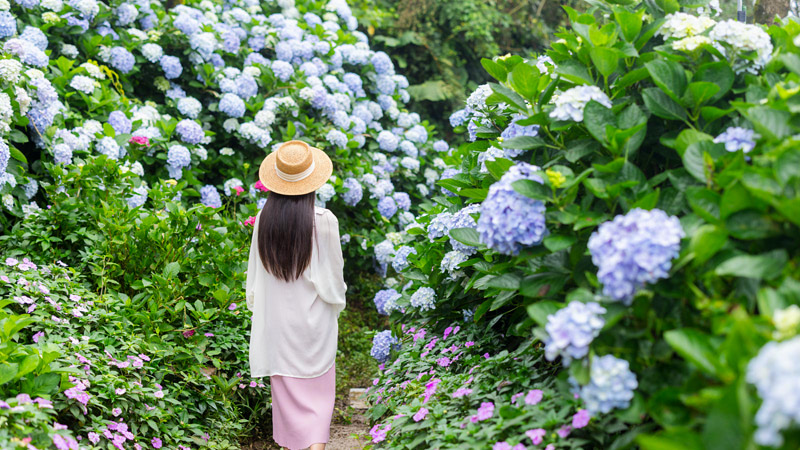 Enjoy Your Summer Hanami With Hydrangeas
Enjoy Your Summer Hanami With Hydrangeas
Japan Rainy Season Tips
- Be positive! Don't make the rain your imaginary enemy; just take it as another medium to enjoy Japan.
- Compared to more spare shoes, I prefer to bring a pair of rain boots for Japan's rainy season sightseeing, but more spare socks are still necessary for the indoor activities or emergencies.
- Sometimes, a raincoat may not be that convenient during your city tour (which requires frequent in-and-out). The transparent umbrella and the unfolded one are more recommended. However, if Tokyo Disney or Universal Studios are also on your plan, a raincoat is still the best.
- Without the dryer, you will have a long period to dry your clothes during this humid season, so pack some desiccants to avoid mildew for your wet clothes, or consider skipping the laundry process by bringing more spare T-shirts.
- Dryers in Japan are not as strong as those in Europe or America. You may need 2 or 3 cycles for a complete dry.
- Take advantage of the "dry model" of the air conditioner, which is helpful for your sound sleep. Shower rooms with a drying function are also a good place to hang your wet clothes.
- Don't forget the extra bag for wet clothes.
Enjoy the Rainy Season of Japan
A rainy season visit to Japan may not be as bad as your imagination, and most importantly, there is still much you can do even if the island is covered by the unreasonable rainfall. Get your preparation well, or contact us to leave all the rainy season planning to Odynovo! According to your preference and needs, enjoy the rainy season of Japan with Odynovo!
Related Posts You May Like
What Our Clients Say
Explore the latest verified reviews of Odynovo's travel services on Tripadvisor, Google, Trustpilot, Product Review and more trusted platforms.

